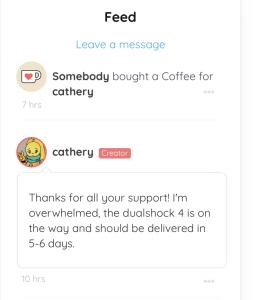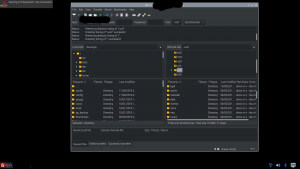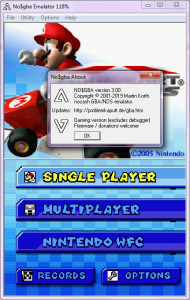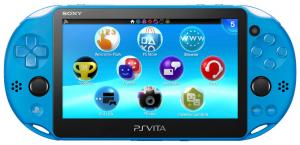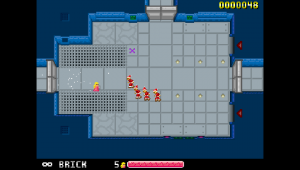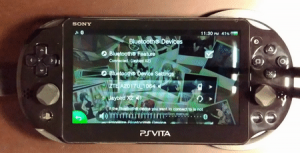Following the success of community-created hardware offerings for the PSVita such as the SD2Vita and PSVSD, many people got interested when VitaDock was announced. As a result, its IndieGoGo campaign received over €16,000 (~$17,700) but after various delays and issues, its creator xCorra seems to have disappeared and now, Crash-Cortez has publicly shared the software that made it tick for individuals who wish to create their own dock.
What is VitaDock? What happened to it?
VitaDock is a Raspberry Pi-based dock for the PlayStation Vita which lets you easily stream its screen to a television with Xerpi’s udcd_uvc plugin.

Thanks to the convenience it provides, there was a good deal of interest in the VitaDock but things seem to have gone wrong (Image from xCorra’s YouTube channel which is still up)
This dock, which is compatible with both the PSVita Phat (OLED) and Slim, was originally announced this April by the Croatian xCorra and the initial units were slated to be shipped in May. After gaining some traction, xCorra added some more VitaDock production waves with shipping estimates ranging from June-August and everything seemed fine for a while.
However, problems started cropping up when the shipment date got closer and this list describes them in chronological order:
- In late May, shipping of the first batch had to be delayed by 2 weeks due to an unfortunate family situation – up till here, nobody was concerned
- In late June, after a month without any updates, xCorra claimed that IndieGoGo hadn’t released project funds yet although he didn’t give details on how he’d proceed
- In late July, he claimed that production would be starting in 10 days – at this point, some individuals started getting concerned as the update frequency was pretty abysmal
- In late August, xCorra released the software for the dock on a subreddit that he’s now made private and claimed that shipments were to go out in September
- A few days before xCorra claimed he’d be shipping them (Sep 12), he asked his backers whether they wanted a Raspberry Pi 3 or a Raspberry Pi 4 with the latter option adding a one week delay.
- In early October, he opted to use a Raspberry Pi 3 citing lack of feedback from backers even though the comments section was full of people wanting to wait for a Raspberry Pi 4
- On the 7th of October, xCorra said that he shipped the first dock and shipping them out was going to be slow but steady in the coming weeks.
On October 3, a Reddit user wrote a review of the PSVita Dock and compared it to a PSTV meaning that some units were sent.Update: The review isn’t of the dock but of the dock’s software running on the author’s Raspberry Pi so it’s still unclear if any units were sent
- A few days ago, xCorra completely disappeared from the internet putting the project into limbo
Following a report by Crash-Cortez, it seems that xCorra deleted his Reddit account (u/xCorra), his GitHub, his Twitter account and made the r/psvitadock subreddit, which contained lots information about the dock, private which has led many to believe that xCorra might not intend to keep up his promises relating to his IndieGoGo project. Other than that, many people have commented about being scammed on the IndieGoGo campaign page and xCorra has not responded to any of them.
An attempt by myself to reach out to him on Discord didn’t lead anywhere which doesn’t sound good for anyone who backed the PSVita Dock…
What did Crash-Cortez share? Can I make my own dock with it?

Thanks to Crash-Cortez’s gesture, it’s possible to create your own VitaDock provided you have a Raspberry Pi 3B+!
In light of the above situation, Reddit user Crash-Cortez decided to share the software that came with VitaDock so that anybody with a Raspberry Pi 3B+ could create their own dock.
This was made possible as he had copied all VitaDock files to his own personal GitHub and the stuff he shared includes:
- A modified version of Xerpi’s udcd_uvc plugin
- A Linux-based distribution to install on the Raspberry Pi along with VLC setup scripts for the best experience
- The SwitchToPSTV application which lets easily you enable/disable the MiniVitaTV plugin
- Instructions on how to set up everything
Other than sharing software for one to create their own dock for the PSVita, Crash-Cortez is also working on a streaming solution that uses MPV which might give better results than VLC if optimised correctly so that’s something to keep an eye out for.
Conclusion
As for those who backed the PSVita Dock (or VitaDock as many call it) on IndieGoGo and didn’t receive it, things don’t look great as IndieGoGo doesn’t provide refunds when campaign owners don’t keep up their end of the bargain provided that contribution funds were disbursed/released. According to their refund policy, one has to contact the campaign’s owner to get their money back but it’s doubtful that xCorra wishes to receive such requests since he deleted the main avenues of contacting him.
The post PSVita News: Crash-Cortez publicly shares VitaDock software after xCorra, its creator, seemingly disappears from the internet! – IndieGoGo backers brace yourselves appeared first on Wololo.net.







